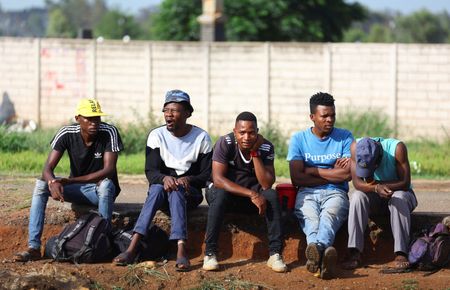JOHANNESBURG (Reuters) -South Africa’s rand retreated from a five-month high against the dollar on Monday as the greenback strengthened, with China’s re-imposition of a lockdown in Shanghai impacting risk taking.
At 1608 GMT, the rand traded at around 14.7006 against the dollar, 1.01% weaker than its close on Friday when it touched 14.4738, the strongest level since Oct. 21, after the central bank raised the repo rate.
“(The rand) has now reached its short-term technical support level around the 14.5000 level, where it has met with USD buying interest — this as the situation in Ukraine continues and the Chinese continue to battle another wave of COVID-19 infections,” Nedbank analysts wrote in a note.
Shanghai, China’s financial hub, went into a lockdown on Sunday as authorities ordered a two-phased shutdown, with firms and factories to suspend manufacturing, or work remotely during the nine-day period in order to carry out COVID-19 testing.
Investor focus was also on peace talks between Russia and Ukraine set to take place in Turkey this week.[nL2N2VV0AC]
Shares on the Johannesburg Stock Exchange (JSE) marginally fell from their Friday close as investors sat on the fences awaiting clarity on where the Russia-Ukraine war and peace talks between the two sides were headed.
The benchmark index closed down 0.18% to 74,194 points, while the blue-chip index ended down 0.21% to 67,436 points.
The local stock market, which has found favour with foreign investors since February as they turned away from Russia, has had a largely whipsaw month driven by the rise and fall in commodity prices, amid inflationary pressures.
“By far, inflation is still a bigger concern for the stock market than the Russia-Ukraine war,” said Wayne McCurrie, portfolio manager with FNB.
He said while it was hard to predict the course for inflation, a resolution to the Ukraine conflict could ease prices and that could bring commodity stocks under pressure.
Government bonds also weakened, with the yield on the benchmark 2030 maturity down 3.5 basis points to 9.655%.
(Reporting by Olivia Kumwenda-Mtambo and Promit Mukherjee; Editing by Uttaresh.V and Andrea Ricci)










